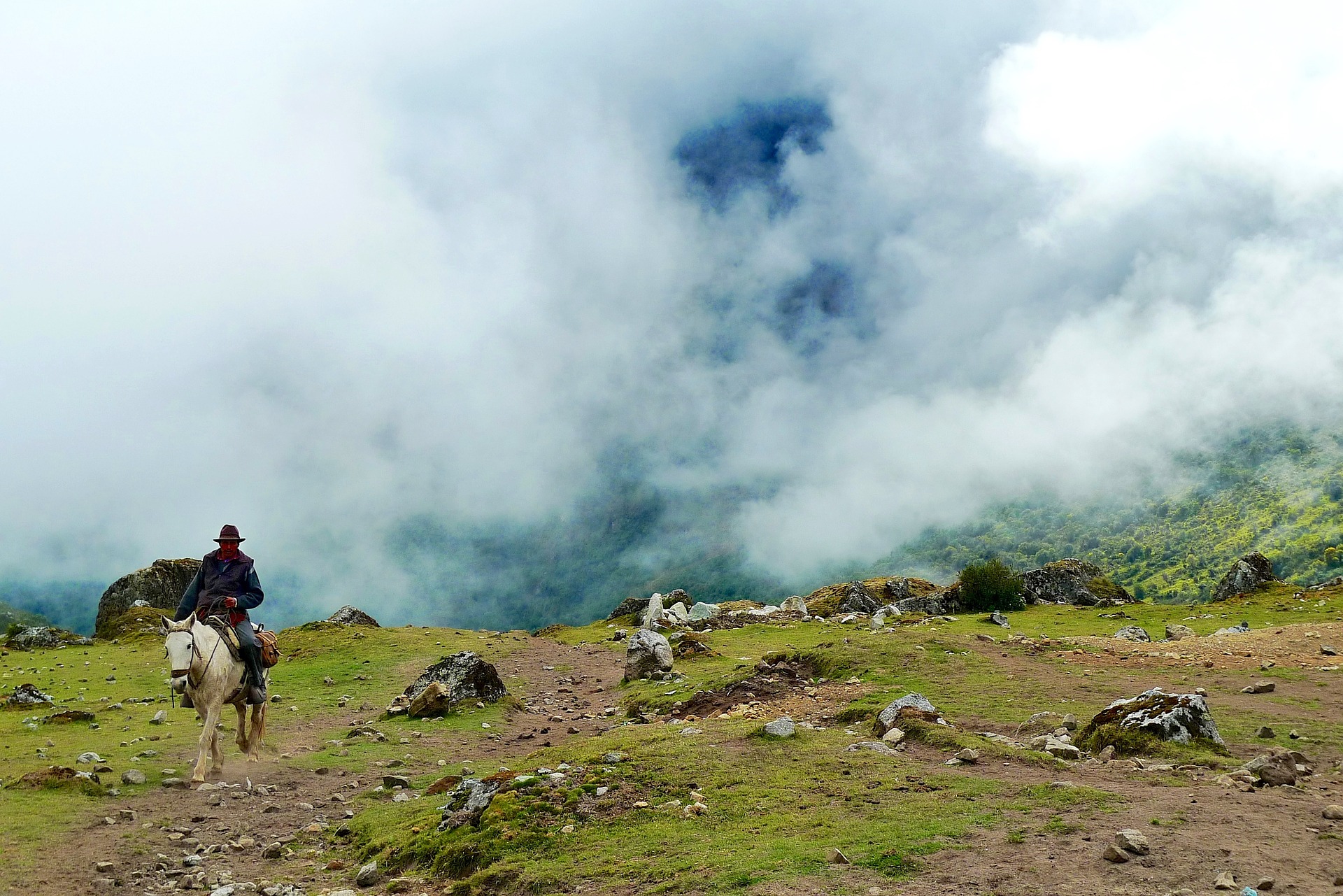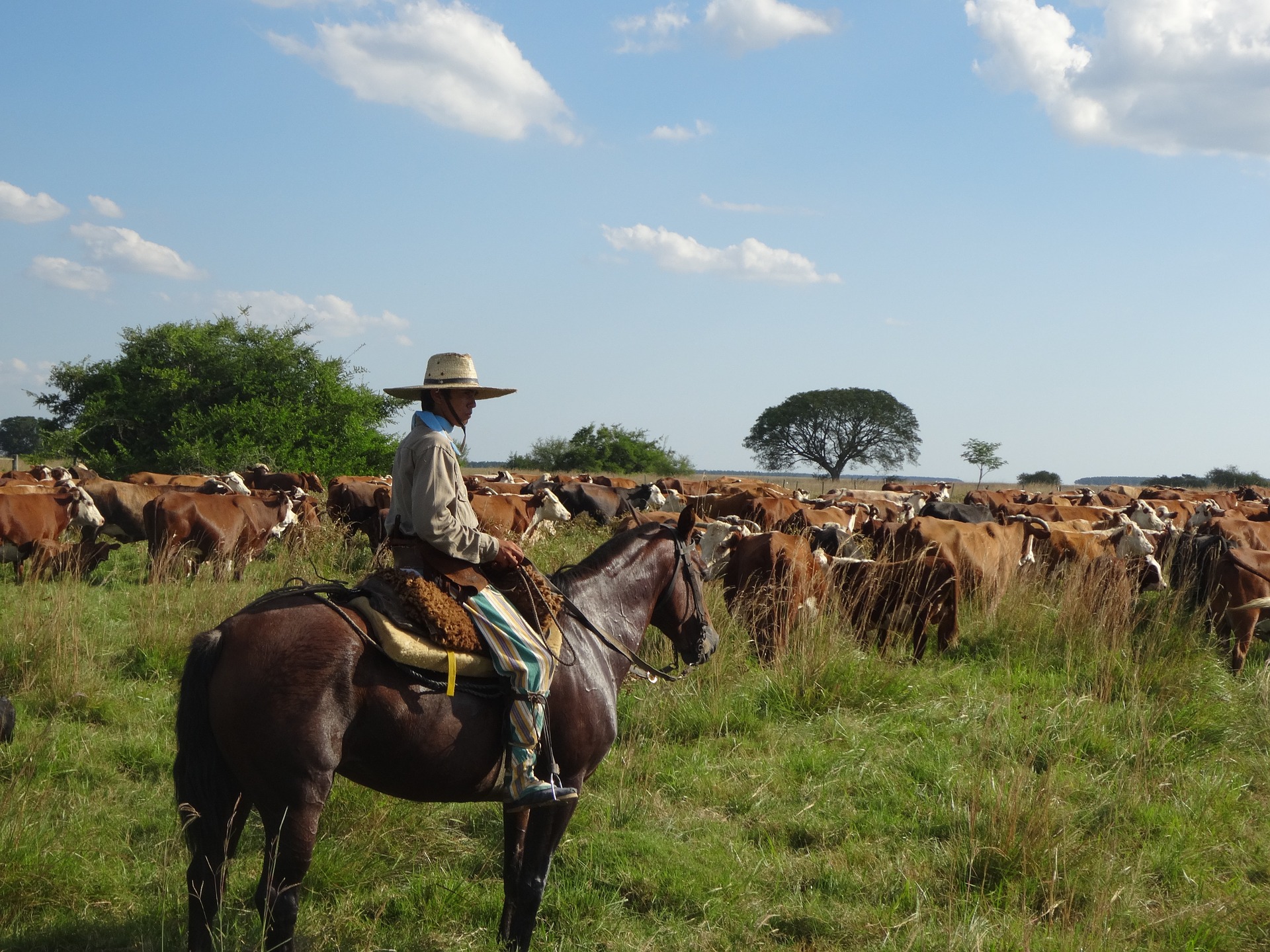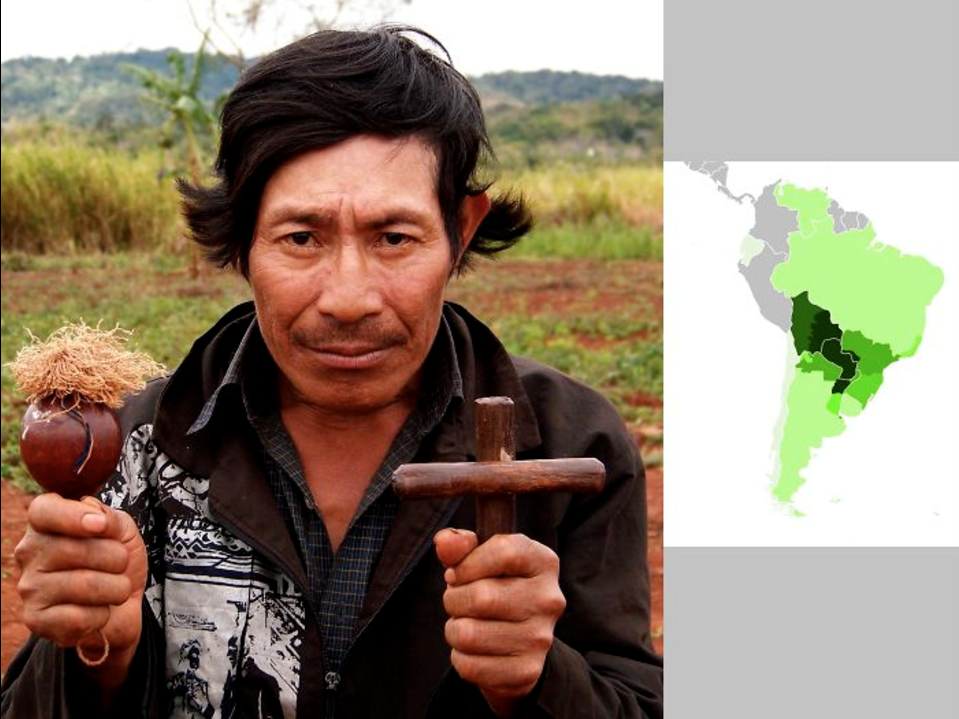Published on: Mar 21, 2017, by Alex Cwalinski
Among some of the many unique things about Argentina, are the Gauchos. These cowboys of South America have a lot in common with their American counterparts. I spent a month living and working on an active horse and cattle ranch to learn what life is like for a Gaucho.
The Gauchos
Gauchos, are the Cowboys of Argentina. They share common traits with the American Cowboy, like a penchant for lawlessness, skilled horsemanship, and ruggedness. In this part of Argentina, they say, a man without a horse is a man without legs.
Like the American Cowboy, the Gauchos flourished in the mid to late 1800s and they lived in the less inhabited parts of their country.
The Gaucho Toolkit
Gauchos carry an important set of tools that are essential for life in the Pampas. Like the Rebenque that you can see hanging off the side of the Gaucho, in the picture above. This tool is essentially a flat rawhide whip, about two feet long. It's used to both 'motivate' (their words, not mine) the cattle and the horses, to move quicker.
Then they have the Boleadoras. These are a throwing weapon, unique to South America. It is made out of three dense balls, connected together by rope. Each rope cord is about two feet long and is used to catch animals by throwing it at the their legs, entangling them. Indigenous people have used Boleadoras for thousands of years, in hunting and in war.
They also carry the traditional Lasso, to catch runaway cattle and horses. No toolkit is complete without a knife. The Gauchos carry a blade called the Facón. It can range anywhere from 10 to 20 inches in length. This thick blade is used as a weapon, tool, and eating utensil.
The Criollo Horse
Some consider the Criollo to be the hardiest horse with the most stamina. Before a male Criollo can be selected for breeding, it must pass an extremely rigorous test called, La Marcha.
La Marcha consists of a 466 mile long course that must be completed in 14 days. Each horse must carry 200 pounds and can only eat grass during the entire event. 20 days before it begins, they cannot be ridden or given any supplements or feed, besides grass.
This strict breeding requirement has made the breed famous for their endurance capabilities and ability to live in harsh conditions. The Criollo can survive on grass alone and have been known to live up to 40 years.
Between 1925 and 1928, Swiss adventurer Aimé Félix Tschiffely, rode two Criollo from Buenos Aires to New York City. The trip was again repeated from 2002 - 2004 by South African, Marianne Du Toit.
The Pampas
The pampas region of South America covers nearly 300,000 square miles and extends into Brazil, Uruguay and Paraguay. The land is relatively flat and marked by rolling hills. Grass thrives in these conditions, making it the perfect place for raising cattle.
This is also South America's tornado country and huge thunderstorms are known to cause dangerous flash flooding in the region.
Generally, the climate is temperate, with summer heat peaking at 100 degrees Fahrenheit and winter temperatures dropping to 34.
The Cattle
Cattle in the Pampas eat grass, instead of grain or feed. They're also provided with an enormous amount of space to roam and get exercise.
These cows don't take any hormones either, so they can't pop any drug tests, but this means they take longer to mature in size.
This way of raising cattle is more expensive due to the amount of land, time, and Gauchos needed. However, these cattle don't require antibiotics, like feedlot cattle.
Feedlot cattle live in small grassless lots and eat grain, packed with antibiotics. The drugs keep them from getting sick, since they're essentially defecating where they sleep and eat. More and more cattle in Argentina are being produced this way. This has made it harder for Gauchos to find work and get paid fairly.
The Guarani
One of the very first things I noticed when I got to the ranch, was the way the locals spoke Spanish. They had such a strong accent that it didn't even sound like they were speaking Spanish at all.
That's because a lot of the words they used weren't Spanish. Many of the locals here speak a language called Guarani. It’s the most widely used indigenous language in the Americas.
Both languages in the Pampas now borrow words from each other. Making it harder for travelers like myself to understand the locals. Pictured above is a Guarani Shaman, who incorporates a mixture of his native religion with Roman Catholicism.
Working Cattle Dogs
Working dogs in Argentina can come from all different breeds. The ranch had two small working dogs, Chancla and Rosita, that worked with the Gauchos everyday. They were just as effective in rounding up the cattle as one Gaucho, and needed little to no instruction.
Tough Pups
They were both mixed breeds. Rosita was medium size dog, about 40 pounds with short black hair. Chancla, was small, about 20 pounds. She worked twice as hard as some of the horses. As small as these dogs were, they covered a lot of ground, running up to 15 miles a day. Injuries didn't stop them either. Chancla would work with a limping back leg, and could chase down a runaway cow, no matter how big.
Despite their tough work ethic, they love to play and relax after a long day on the range.
Talia
My second week at the ranch I went on my first supervised ride through the grasslands. I went out with a Gaucho who looked like he was 40 years old. His name was Antonio, and he was 19. He’d been working as a Gaucho since he was 12 years old, ever since his father deemed him old enough.
One of the daily tasks here was to walk the perimeter of the ranch to make sure none of the wire fences were damaged. Cattle and horses often get tangled in the wire since there eyesight isn’t that great. At least once a week one of the animals would need to get their leg freed from the wire.
On other days the Gauchos had to herd, anywhere from 50 – 100 cattle through a special wash. It’s like a shallow canal full of water and pesticides, to wash away the tics and keep their wounds clean.
Eventually Antonio started letting me work alongside the other Gauchos. One day I went out to round up a large group of cattle so we could count them and tag the younger cows. It was my longest day on the ranch. The horse I had been riding was a gorgeous light brown Criollo, named Talia. She was a great horse. Mild mannered, obedient, and strong. Everyday before I suited her up with the saddle and reins, I’d grab some of the greenest grass I could find, and feed it to her. She liked that and we soon became bffs.
The Lasso
By week three I was going out on horseback on my own. I’d inspect the gates, the fences, and huge sections of the property. They even encouraged me to learn how to lasso, which is a lot harder than it looks.
Every weekend, I’d go out into the town of Mercedes to pick up supplies, like beer, and a nice leather hat.
The Legend of Gaucho Gil
In the town of Mercedes, I came across several small shrines on the side of the road. Like the one in the photo above, to the left. These red little shrines were in dedication to a legendary figure of Northern Argentina, named Gaucho Gil.
Though not officially recognized by the Catholic Church, Gaucho Gil is a local Saint.
In the mid 1800s, Gaucho Gil fought for the Argentine Army as a skilled Cavalryman against Paraguay. After returning home as a hero, he was drafted, this time to fight in Argentina’s Civil War. But instead of fighting, he deserted and became a fugitive.
Not able to return home and live out in the open, he lived the life of an outlaw, evading capture while stealing from the wealthy and giving to the poor. This earned him the reputation as a Robin Hood figure. He was even known as a miracle worker, with healing powers and immunity to bullets.
Eventually he was captured by the local authorities who sent him to trial immediately, where he was sentenced to death. The community was strongly against this decision and demanded a pardon.
Local police, aware of the backlash following his sentence, took Gaucho Gil outside of town where they could quickly execute him. However, a pardon was soon granted by another judge.
Legend has it that they hung Gaucho Gil upside down by his feet, against a tree. Since he was supposedly immune to bullets, his neck would be slit, instead of facing a firing squad.
While upside down, Gaucho Gil told his executioner that a pardon had been granted and that if he kills an innocent man, the executioner’s son would become sick. The only way to heal his son would be to pray to the Gaucho himself, so that he could personally ask God to heal the boy.
The executioner killed Gaucho Gil and upon returning home, discovered that his son had grown very sick. The man prayed to Gaucho Gil, and his son was miraculously cured.
Every since then, the people in this region have been praying to Gaucho Gil, for everything from better grades at school to curing heart ailments.
Every year, over 200,000 people visit Gaucho Gil’s main shrine in Mercedes.
You should visit it for yourself!
Subscribe to our podcast to stay updated on our latest episodes.















